Home » Horticulture » Romaine Calm and Garden On » Module 3: From the ground up! Soil, compost, and fertilizer
Module 3: From the ground up! Soil, compost, and fertilizer
Learn the basics of soil texture, how pH affects nutrient availability, why compost matters, and how primary plant nutrients function in plants.
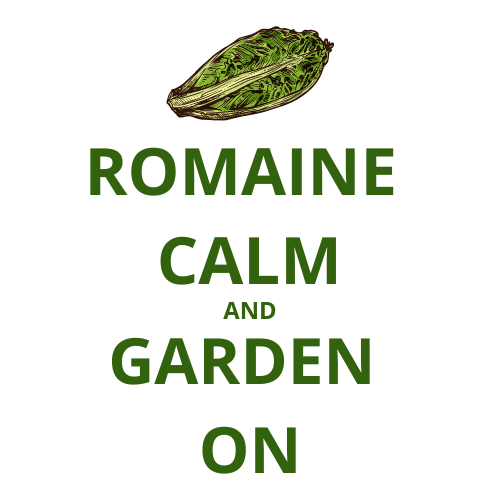
At the end of this lesson, you’ll be able to:
- List the components of soil texture
- Define soil pH and explain its relationship between soil pH and nutrient availability
- Explain why it is important to add organic matter (compost) to the soil
- Match primary plant nutrients with the function they support in the plant
Getting started with soil texture basics
In this section, you will learn about the components of soil texture.
Ideal soil texture contains 50% pore space and 50% solid particles.
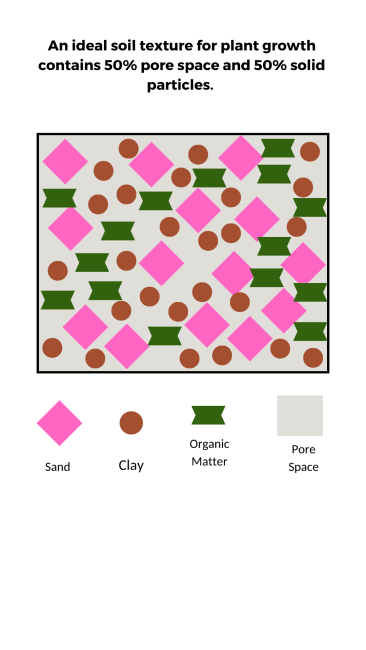
- Soil texture refers to the proportion of solid mineral particles in the soil (sand, silt, and clay particles) in the soil.The type of mineral particle (sand, silt, or clay) will influence the size of the pore space.
- 50% of an ideal (loamy) soil is pore space, filled equal parts air and water.
- 50% of an ideal (loamy) soil is solid particles. Solid particles are weathered minerals from solid rocks (parent material) and organic material.
- Depending on the mineral composition of the weathered rock (parent material), the particles will be sand, silt, or clay.
- Organic matter is decaying plant and animal matter along with microorganisms.
- Loamy soil is 45% minerals and 5% organic matter.
- Note about graphic: not to scale and does not include silt particles. Simply for illustration of the concept of pore space.
Sandy soils drain quickly because they have large pore spaces.
- Sand is the largest mineral soil particle. Silt next largest.
- Sandy soils are typically low in organic matter and fertility.
- The large particle size creates large pore spaces. Large pore spaces allow water and nutrients to drain quickly.
- Sandy soils feel loose, coarse, and gritty. They won’t hold shape when squeezed in your hand.
- Adding compost to sandy soils helps them retain moisture and nutrients.
- Note about graphics: not to scale and does not include silt particles. Simply for illustration of the concept of pore space.
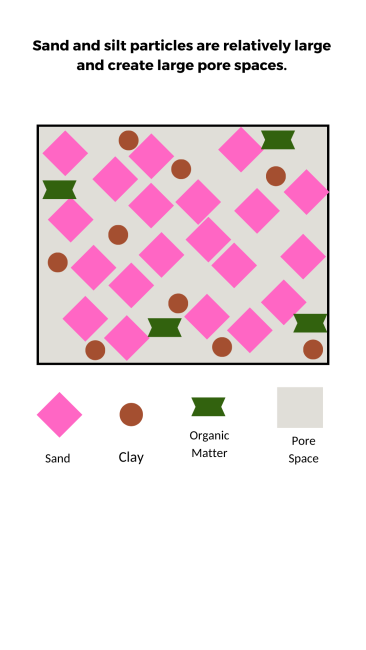
Clay particles are very small and create small pore spaces.
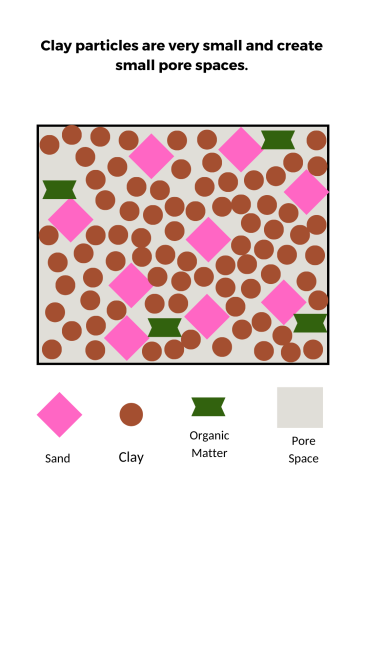
- Soils with high clay particle content have limited pore space.
- Clay soils are better able to hold nutrients and soil moisture.
- Clay soils can be heavy and dense.
- They feels sticky when wet and hard when dry, which makes cultivation difficult.
- They will form a lump when squeezed in hand
- Compost binds with clay particles to form larger particles for better drainage
- Adding compost will also help clay resist surface crusting and erosion.
- Note about graphics: not to scale and does not include silt particles. Simply for illustration of the concept of pore space.
What is soil pH and how does it affect a plants ability to absorb nutrients?
Even if there are plenty of nutrients in the soil, if the pH is incorrect for the plant type, the plant will suffer. Let’s learn why!
If the soil pH is wrong, either too low or too high, nutrients in the soil will not be available for the plants.
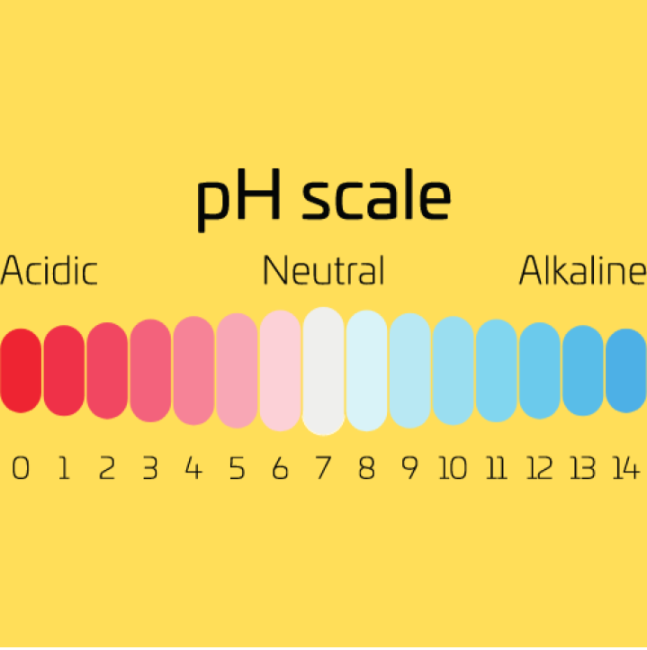
- Soil pH is a measure of how acidic or alkaline (basic) a soil is.
- Different nutrients are available to plants at different pH levels.
- Optimal pH differs among plants. Blueberries prefer a low pH of 4.5-5.5. Asparagus will tolerate basic soils up to 8.0.
6.5-6.8 is ideal for most garden vegetables. - If the soil pH is wrong, either too low or too high, the nutrients in the soil will not be available for the plants.
Example: Despite available iron in the soil, a blueberry growing in neutral soil will be iron deficient.
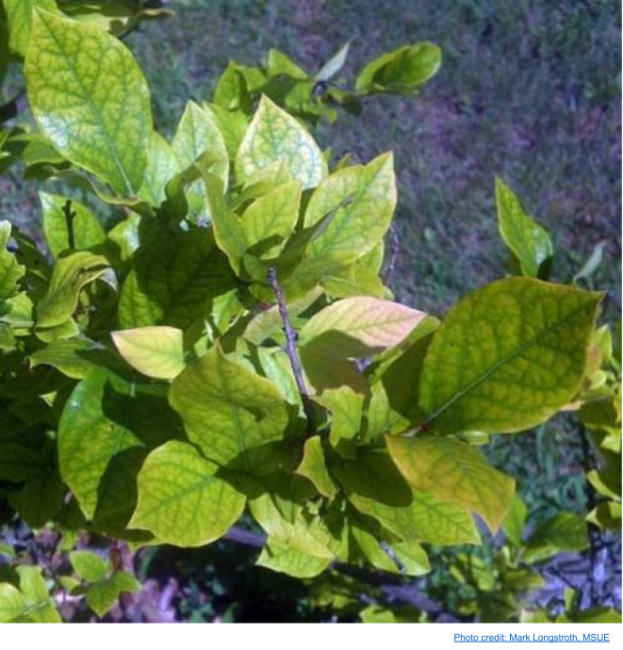
- Blueberries require 4.5-5.5 soil pH. This blueberry is growing in neutral soil and is suffering from iron deficiency.
- There is iron in the soil, however the iron is not available to the blueberry. The deficiency shows up as yellowed leaves and weakened stems.
How can adding compost help garden soil?
Adding compost to our landscapes improves the soil texture, microbial activity, can improve disease resistance, as well as act as a buffer in the soil.
Compost improves sandy and heavy clay soils.
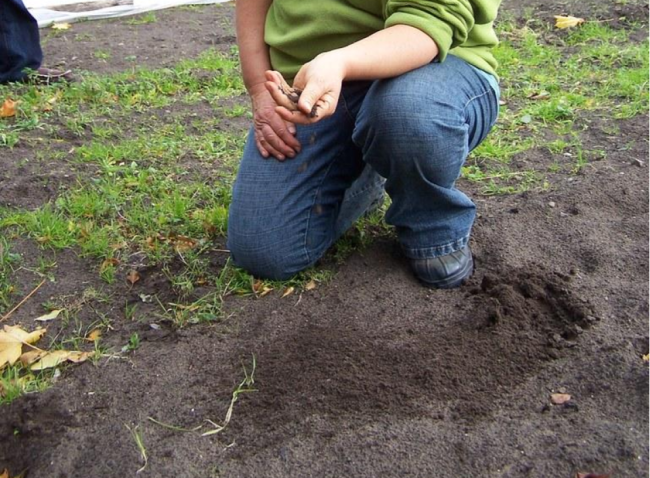
Added organic matter in sandy soils improves nutrient and moisture retention.
Photo credit: “Sandy soil, yet they can grow on it” by Evil Genius Society: Share the world… is marked with CC BY-NC-ND 2.0.
Added organic matter in clay soils improves drainage.
Photo credit: “Clay soil” by John and Anni is marked with CC BY-NC-SA 2.0.
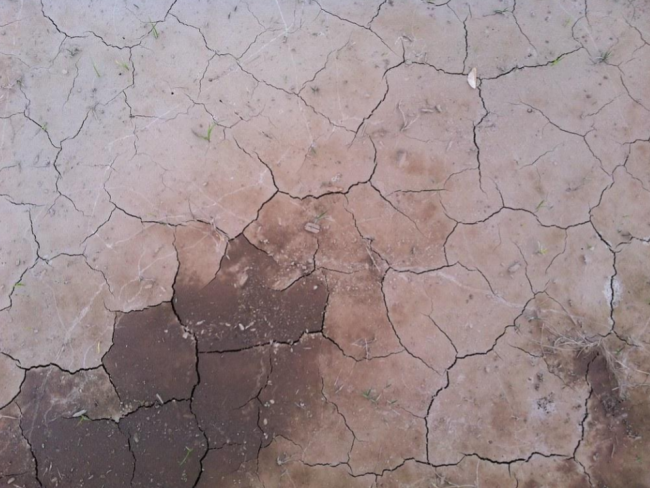
Adding compost to soil increases micro and macro organism activity.
- Compost increases microbial activity, even as the decomposition process slows. Convert nitrogen, potassium and phosphorus into forms plants can use or chemical substances that protect plants from certain diseases
- Compost encourages earthworms, which aerate the soil, improve drainage and bring up minerals from the subsoil
Compost acts as a buffer in the soil.
- Compost acts as a buffer against pH extremes.
- Organic matter has high capacity to fix heavy metals in soils and neutralize soil toxins
- Helps with high salt concentration.
- Moderates soil temperatures
- Dark in color, absorbs more heat; helps with spring thaw
- Soil covered with 1-2 inches of compost mulch tends to be cooler than soil without mulch. This will help with moisture retention. Cooler soil evaporates moisture less quickly.
Section Four Heading
This block pattern groups sections together with alternating background colors – like stripes. To create more than four sections, you can add a second instance of the pattern or duplicate a section. If you add more sections, be sure to continue to alternate the background colors. You can also change the background color to something other than a subtle gray.
Adding compost to soil increases micro and macro organism activity.
- Compost increases microbial activity, even as the decomposition process slows. Convert nitrogen, potassium and phosphorus into forms plants can use or chemical substances that protect plants from certain diseases
- Compost encourages earthworms, which aerate the soil, improve drainage and bring up minerals from the subsoil
Compost acts as a buffer in the soil.
- Compost acts as a buffer against pH extremes.
- Organic matter has high capacity to fix heavy metals in soils and neutralize soil toxins
- Helps with high salt concentration.
- Moderates soil temperatures
- Dark in color, absorbs more heat; helps with spring thaw
- Soil covered with 1-2 inches of compost mulch tends to be cooler than soil without mulch. This will help with moisture retention. Cooler soil evaporates moisture less quickly.
Compost materials
The quality of finished compost depends on the variety and balance of materials.
- Variety of materials increases types of microorganisms. Greater diversity in microorganisms, the greater the diversity in the nutrients they process.
- Note about the term organic. Here we mean materials derived from living organisms, not “certified organic”.
- You want a ratio of 3 parts Brown (Carbon rich) =1 part Green (Nitrogen rich)
- Fresh, juicy materials tend to be higher in Nitrogen content. These are your green materials.
- Materials of animal origin tend to be rich in nitrogen. Feathers, manure, blood meal. These are greens.
- Drier, woody materials tend to be browns. These have a higher carbon content.
Yes, you can use these materials, but with precautions…
- Cardboard & Corncobs: Slow to decompose. Chop and add with nitrogen rich material
- Apple Pomace: High moisture content; use in thin layers. Has potential to add to compaction. Compaction in the compost means no air to the microbes.
- Sawdust: Slow to decompose; can cause compaction and low oxygen. Work into the pile in small sprinklings with nitrogen rich materials. Do not use treated lumber sawdust. Use it as a thin layer on top to deter rodents.
- Sawdust: Slow to decompose; can cause compaction and low oxygen. Work into the pile in small sprinklings with nitrogen rich materials. Do not use treated lumber sawdust. Use it as a thin layer on top to deter rodents.
These items are a hard no! Do not add to your compost pile!
- Cat litter/omnivore feces: may contain pathogens toxic to humans. May be chemicals in the litter
- Charcoal briquettes: Contain sulfur oxide and other chemicals toxic to soil
- Wood ash: Will change the pile chemistry and pH. Can cause nutrient imbalance
- Cooked food waste- including baked goods, dairy products, meat or fish scraps, or peanut butter: As they decompose they will smell bad and attract pests.
Applying compost
When is the best time to apply compost?
- Fall, although it can be applied spring, summer or fall
- After first killing frost and before ground freezes
- Apply either top dressed or worked in
- If using in spring, add a month before planting, because fresh compost can inhibit seed germination.
- In summer add as top dressing or side dressing
- When storing finished compost, cover with plastic tarp to discourage nutrient leaching. For maximum benefit, don’t leave unused for more than six months.
Primary plant nutrients
The primary nutrients plants need from soil are nitrogen(N), phosphorus (P), and potassium (K).
- To complete their life cycle, plants need 17 nutrients in different amounts. A plant gets their carbon, hydrogen, and oxygen from air and water. This accounts for 94% of the plant’s weight. The other 6% of the plant’s weight comes from soil nutrients.
- Of the remaining 14 nutrients, nitrogen, phosphorus, and potassium are the primary macronutrients.
- Factors that influence a plant’s ability to use nutrients:
- Clay and organic matter in the soil will increase the amount of nutrients available
- Soil pH affects nutrient availability
- Some nutrients affect availability of other nutrients.
- Too much soil moisture can leach nutrients from the soil.
| Nitrogen (n) | Rapid foliage growth; green color | Easily leached from soil |
| Phosphorus | Promotes root formation and growth; affects quality of flower, fruit, and seed production. | Does not leach from soil readily |
| Potassium | Helps plants overcome drought stress; improves winter hardiness | Leaches from soil |
Fertilizer basics
The three numbers on fertilizer packaging are the percentage of nitrogen, phosphorus, and potassium (NPK).
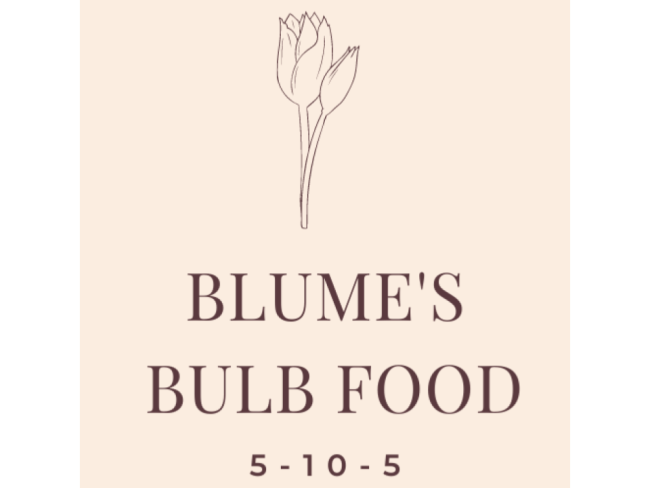
In the first example, Blume’s Bulb Food, the package is 5 percent nitrogen, 10 percent phosphorus, and 5 percent potassium. The rest is usually inert materials. Let’s practice with the rest.
What is the percentage of phosphorus in Harrison’s Winterizer Turf Fertilizer?
Answer: 0%
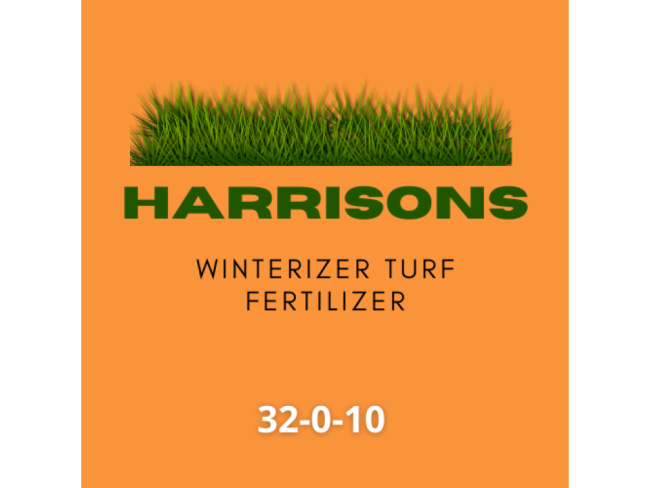
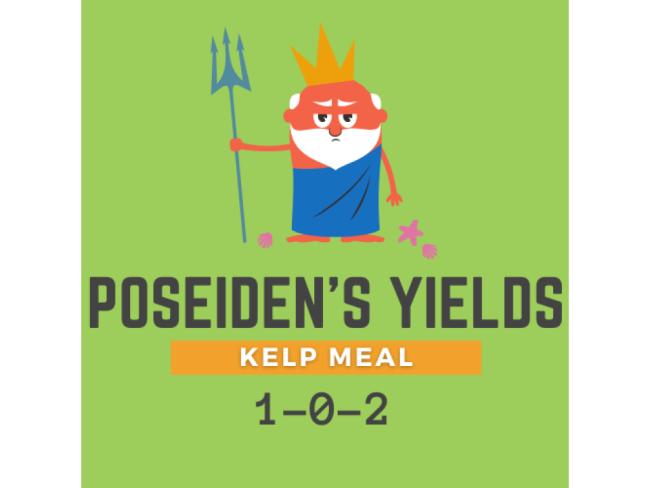
What is the percentage of nitrogen in Poseidon’s Yield Kelp Meal?
Answer: 1%
What is the percentage of potassium in Marvel Sprout Mar-Cid?
Answer: 10%
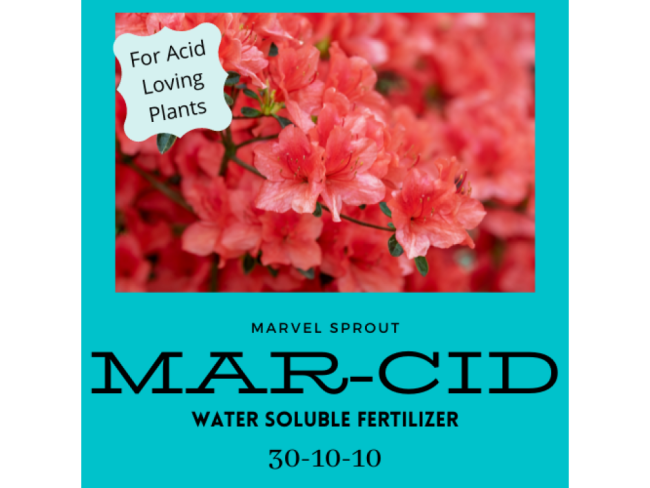
Soil testing
A soil test gives baseline measurements of soil fertility (PK), pH, and organic matter.
- Get soil tested to know baseline NPK, pH and organic matter in soil.
- Make amendments as needed.
- Test soil every 3 years
Resources
NC State Extension Gardener Handbook Chapter 1. Soils and plant nutrients
Build your own composters
Barrel composter (G4020-01)
Can composter (G4020-02)
Concrete block composter (G4020-03)
Wire mesh composter (G4020-04)
Wood & wire composter (G4020-05)
Wood pallet composter (G4020-06)
Wood 3-bin composter (G4020-07)
Master Composter Self Study Course




